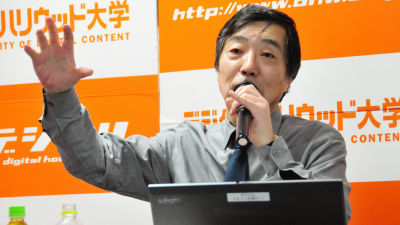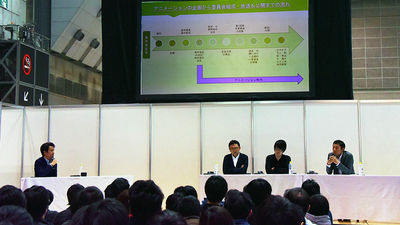'Both anime and games are growing markets, but there is always a shortage of talent,' CyberConnect2 President Matsuyama and others say in 'Toy Box'

At the pop culture event 'Omocha Hako' held in Hakodate on Saturday, July 12th and Sunday, July 13th, 2025, Hiroshi Matsuyama, president of game company CyberConnect2, spoke with Saya Fukase, director of animation production company URAN Pictures, and Naoya Fukushi, director of animation production company Tengu Kobo, about the entertainment market.
From left: Fukase, Fukushi, and Matsuyama.

First, Matsuyama pointed out that 'both the anime and game markets are growing.' The size of the domestic game market, including smartphones, PCs, and home software and hardware, is approximately 2.1 trillion yen. It has been on the rise for the past 10 years.

Meanwhile, the domestic anime market is also on the rise, with the market size now standing at 3.4 trillion yen. Fukase and Fukushi commented, 'If it's true, we'd like a share of that,' but the way the anime industry calculates its 'market size' is different from the game industry, and it also includes 'the amount of Japanese anime-related spending outside of Japan.'
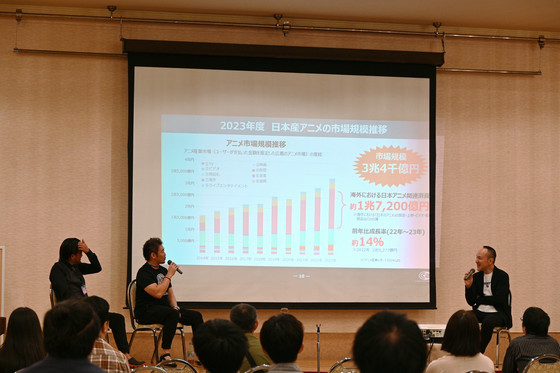
If we consider this as the 'worldwide' market, the total is about 30 trillion yen. North America, shown in pink, is the largest market. East Asia, shown in blue on the bottom left, is larger in area, but according to Matsuyama, although it is the largest, it is actually a bit difficult to talk about the whole in general. In Japan, so-called 'pay-to-play' games account for 60 to 70 percent of games, but the proportion of 'pay-to-play' games is not that high worldwide, with home video games making up the majority.

Meanwhile, the global anime market is over 60 trillion yen, more than twice the size of the video game market. Of this, the majority of anime movies are in North America and Europe. As an example, 'Suzume no Tojimari' earned 193 million dollars at the box office worldwide . However, Japanese anime is not unconditionally well received overseas, and people check things like 'Is there a proper original work?' and 'How big a hit was it in Japan?'

So, what will each industry be like in 2030? First, the video game industry is expected to continue to grow, reaching a market size of about 97 trillion yen, or nearly 100 trillion yen. Regarding this figure, Matsuyama said, 'It will grow to that extent, and we have to help it grow in that way.'
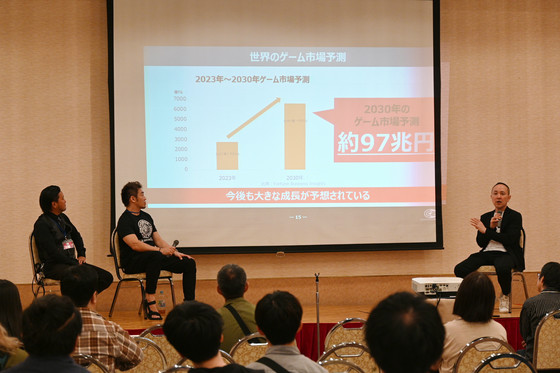
The same can be said for the anime industry, which is also expected to grow to approximately 100 trillion yen by 2030.

The average annual salary in the video game industry is about 5 million yen, which is higher than the average Japanese salary of about 4.6 million yen, and Matsuyama, who is the one paying the salary, can personally relate to this. According to Matsuyama, the video game industry only took shape as an 'industry' quite late, in the 1980s, and this is largely due to the fact that the industry has seen the failures of other entertainment industries, such as anime. For this reason, even within the anime industry, the situation seems to be different for companies in the CG department, which has a relatively short history.
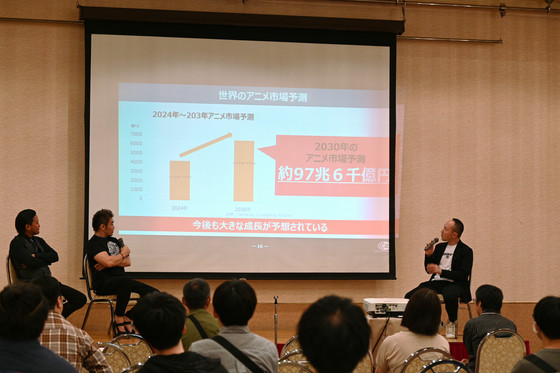
However, in general, since this is specialized work that not everyone can do and there are certain hurdles to overcome, guarantees are now being made that are appropriate for the job.
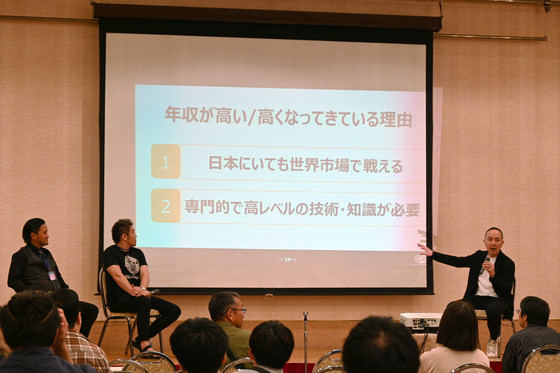
Finally, he said that there is always a labor shortage in both the anime and game industries, so although a certain level of skill is necessary, there are opportunities for those who want to work. With the fact that it is now possible to find work outside of Tokyo, it seems that even those who would have given up on the industry due to geographical conditions now have a chance to jump into the industry, with Fukase trying to set up an anime studio in Hakodate and Fukushi establishing Gunma Prefecture's first anime studio,

Related Posts:
in Coverage, Posted by logc_nt





